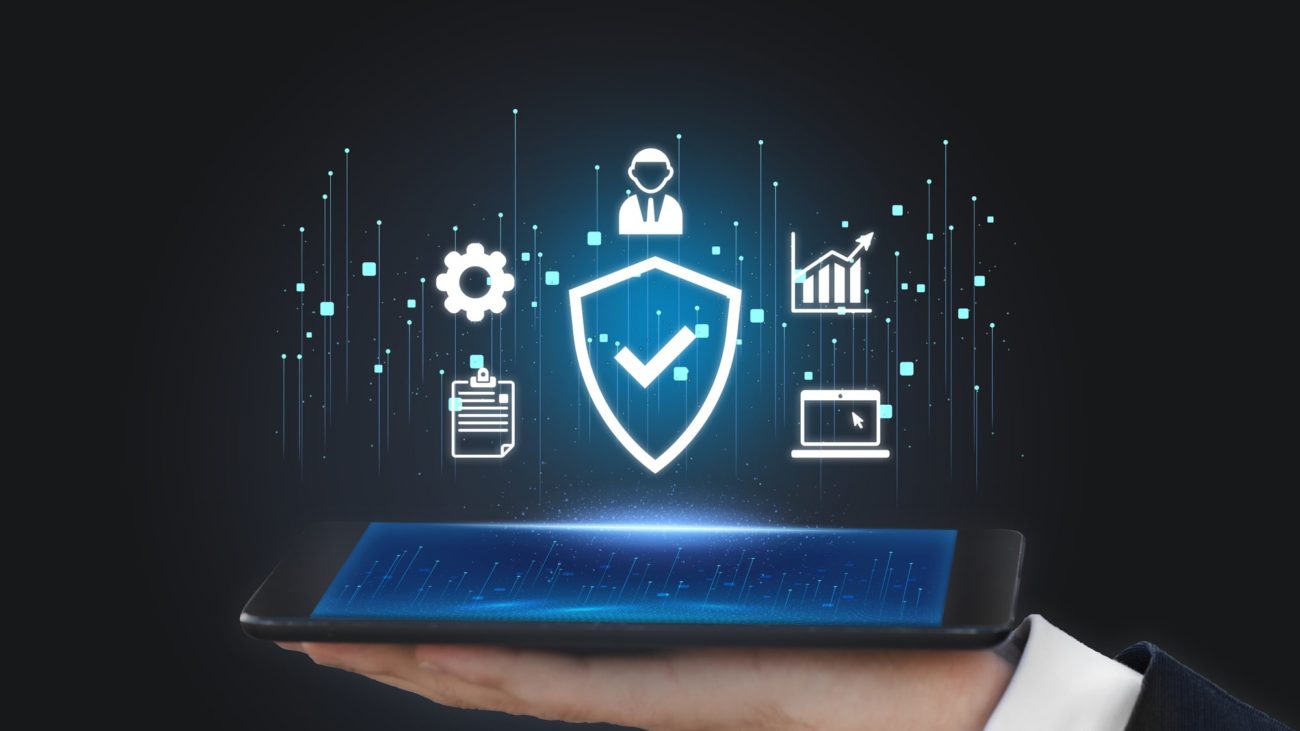As businesses strive to stay competitive in an AI-driven, cloud-first world, modernizing legacy systems is no longer an option—it’s a necessity. However, many organizations hesitate due to fear of business disruption, security risks, or high costs. The reality? Delaying modernization is far riskier than embracing it.
Replatforming and modernization provide scalability, security, AI-readiness, and business agility, but they also come with challenges that must be strategically addressed. Here’s a breakdown of the most common hurdles businesses face during replatforming and how to overcome them.
1. Business Disruptions & Downtime Risks
The Challenge:
One of the biggest concerns organizations face when replatforming is the potential impact on daily operations. Downtime, performance degradation, or failed integrations can disrupt critical business functions, affecting customer experience and revenue. Even minor disruptions can have cascading effects on supply chains, financial transactions, or real-time operations.

The Solution:
Phased and Iterative Migration – Instead of a full-scale migration, adopt a phased approach where components are modernized incrementally. This minimizes risks and ensures that core business functions remain operational throughout the transition.
Zero-Downtime Deployment Strategies – Implement techniques like blue-green deployments (where two identical environments run simultaneously, switching traffic once the new system is stable) and canary releases (rolling out changes to a small subset of users before full deployment) to reduce disruptions.
Hybrid Modernization Approach – Use a coexistence model, where legacy and modern systems run in parallel during the transition period. This approach ensures that critical operations continue uninterrupted while workloads are gradually moved to the new platform.
Automated Rollback Mechanisms – Incorporate automated rollback strategies to revert to the previous state instantly in case of failure, minimizing the impact on end users.
Comprehensive Testing & Validation – Prioritize robust performance testing, stress testing, and failover simulations to preemptively identify issues before they affect live operations.
2. Legacy System Complexity & Lack of Documentation

The Challenge:
Many legacy applications have evolved over decades, often built with outdated technologies, hardcoded dependencies, and poor documentation. These systems may have undergone multiple modifications by different teams, making it difficult to understand the full business logic, dependencies, and architectural intricacies. The lack of clear documentation leads to significant risks, such as migration failures, unexpected regressions, and increased modernization timelines.
The Solution:
- Automated Code Analysis & Refactoring – Leverage AI-driven code scanning and refactoring tools to analyze legacy applications, identify dependencies, and suggest modularization strategies for easier migration.
- AI-Assisted Documentation Generation – Use AI-powered documentation tools to extract business logic, data flows, and dependencies from existing codebases. This helps create real-time documentation that ensures better understanding for developers and architects.
- Domain-Driven Design (DDD) & Microservices Transition – Apply DDD principles to break down monolithic applications into well-defined domain models that can be transitioned into microservices. This approach simplifies modernization and makes systems more adaptable.
- Strangler Fig Pattern for Migration – Instead of rewriting the entire legacy system at once, gradually replace legacy components with modern services using the Strangler Fig pattern. This reduces risk and allows incremental improvements without disrupting business operations.
- Knowledge Transfer & SME Involvement – Engage domain experts and long-term employees to document implicit knowledge about the system and validate modernization approaches. Encourage collaborative sessions between business and IT teams to ensure no critical functionality is lost during replatforming.
3. Data Migration & Integrity Challenges
The Challenge:
Migrating data from legacy systems to modern platforms is often one of the most complex and error-prone aspects of replatforming. Data stored across multiple databases, formats, and environments can result in inconsistencies, corruption, loss, or duplication. Ensuring data integrity, compliance with industry regulations, and seamless accessibility in the new system is critical for business continuity.

The Solution:
- Automated ETL (Extract, Transform, Load) Pipelines – Use AI-assisted ETL tools to automate data extraction, transformation, and loading into the new platform. These tools ensure data is migrated efficiently while preserving relationships, formats, and structures.
- AI-Driven Data Cleansing & Validation – Implement AI-based data profiling, deduplication, and anomaly detection to eliminate inconsistencies, remove redundant records, and ensure compliance with standards like GDPR, HIPAA, or PCI DSS.
- Schema Mapping & Format Standardization – Develop data mapping strategies to align old schemas with modern database structures, ensuring seamless interoperability. Automated schema conversion tools can speed up this process while reducing errors.
- Real-Time Data Replication & Validation – Deploy change data capture (CDC) techniques and real-time validation processes to ensure data consistency between old and new systems before final cutover. This prevents data mismatches and enables quick rollback in case of issues.
- Parallel Run & Gradual Switchover – Before fully decommissioning the legacy system, run both old and new databases in parallel for a defined period to validate accuracy. Implement a read-only mode on the legacy system during the final migration phase to ensure data integrity.
- Comprehensive Data Governance & Compliance Framework – Establish clear data ownership, access controls, and audit trails to meet security and compliance requirements while ensuring accountability throughout the migration process.
4. Ensuring AI & Agentic Architecture Readiness

The Challenge:
Many organizations complete infrastructure modernization without designing their platforms to be AI-ready. This limits their ability to leverage AI-driven decision-making, automation, and predictive analytics effectively. Without a scalable AI architecture, businesses struggle to integrate AI/ML models, implement intelligent workflows, and unlock the full potential of automation.
The Solution:
- Cloud-Native, API-First Architectures – Design AI-ready architectures that leverage cloud-native, event-driven, and API-first approaches. This enables seamless integration with AI services, data pipelines, and automation tools.
- Support for AI-Driven Copilots & Predictive Analytics – Ensure that applications support AI copilots, text-to-SQL dashboards, natural language processing (NLP), and real-time analytics to improve decision-making and user experiences.
- Microservices & Modular AI Deployments – Adopt microservices-based AI models, allowing businesses to deploy AI capabilities incrementally without disrupting core operations. This facilitates AI model updates, retraining, and scaling without system-wide downtime.
- MLOps & Continuous AI Model Optimization – Implement MLOps best practices, enabling automated AI model training, validation, deployment, monitoring, and drift detection to ensure models remain accurate and relevant over time.
- Hybrid AI Integration – Leverage a mix of cloud AI, on-prem AI, and edge AI to optimize latency, cost, and security, ensuring AI services function efficiently across distributed environments.
- AI Governance & Responsible AI Implementation – Establish AI governance frameworks that include explainability, fairness, bias detection, and compliance to meet regulatory requirements while ensuring ethical AI adoption.
5. Security & Compliance Risks During Migration
The Challenge:
Legacy systems often lack modern security controls, making them vulnerable to cyber threats. During migration, data exposure, misconfigurations, and unauthorized access risks increase significantly. Additionally, ensuring compliance with evolving regulations (GDPR, HIPAA, SOC 2, PCI DSS, etc.) can be challenging, especially when moving sensitive data to new environments.

The Solution:
- Zero-Trust Security Model – Implement a zero-trust architecture where access is continuously verified, enforcing least privilege access, multi-factor authentication (MFA), and identity-based security across all layers.
- DevSecOps & Continuous Security Testing – Integrate security-first DevOps (DevSecOps) practices, embedding automated security scans, penetration testing, and compliance checks into the CI/CD pipeline.
- AI-Driven Threat Detection & Anomaly Monitoring – Leverage AI-powered security analytics to detect anomalies, insider threats, and advanced persistent threats (APTs) in real time, proactively mitigating risks.
- Data Encryption & Secure Access Controls – Ensure end-to-end encryption (TLS/SSL, AES-256), role-based access controls (RBAC), and tokenization for sensitive data, both in transit and at rest.
- Automated Compliance & Audit Logging – Use AI-based compliance monitoring tools to continuously assess data security, governance policies, and regulatory compliance while maintaining comprehensive audit logs for real-time tracking.
- Secure API Gateways & Micro-Segmentation – Deploy API security measures such as OAuth, API gateways, and rate limiting while using micro-segmentation to contain security breaches and prevent lateral movement within systems.
6. Change Management & Internal Resistance

The Challenge:
Employees and stakeholders often resist modernization efforts due to fear of workflow disruptions, job security concerns, and the steep learning curve associated with new technologies. Without proper change management, this resistance can slow adoption, reduce productivity, and create friction between IT and business teams.
The Solution:
- AI-Powered Training & Onboarding Assistants – Utilize AI-driven chatbots and virtual assistants to provide interactive training, self-paced learning modules, and real-time guidance, reducing the stress of transitioning to new systems.
- Stakeholder Engagement from Day One – Involve key stakeholders early in the process, ensuring alignment across IT, operations, business, and leadership teams to create a sense of shared ownership and purpose.
- Clear Communication & Change Roadmaps – Develop transparent change management strategies, including regular updates, town halls, and feedback loops, to keep teams informed and address concerns proactively.
- Phased Rollout with Gradual Adoption – Implement a step-by-step transition strategy, starting with pilot groups before full-scale adoption. This allows users to gradually adapt while providing real-world feedback for improvements.
- Continuous Support & Change Champions – Appoint change champions within teams who can mentor colleagues, address concerns, and advocate for modernization, ensuring a smoother adoption curve.
7. Vendor Lock-In & Technology Decisions
The Challenge:
Businesses fear getting locked into proprietary cloud platforms, databases, or software ecosystems, which can lead to high switching costs, reduced flexibility, and long-term dependency on a single vendor. A lack of portability can make future migrations complex, expensive, and restrictive in terms of customization.

The Solution:
- Multi-Cloud & Hybrid-Cloud Strategies – Adopt a multi-cloud or hybrid-cloud approach that enables workloads to run across AWS, Azure, Google Cloud, and on-prem environments, preventing reliance on a single provider.
- Open-Source & Cloud-Agnostic Technologies – Leverage open-source databases (PostgreSQL, MySQL, MongoDB), container orchestration (Kubernetes), and cloud-agnostic DevOps tools (Terraform, ArgoCD) to ensure portability and avoid proprietary lock-in.
- Containerization & API-Driven Architecture – Use Docker containers, Kubernetes, and API-driven microservices to create a modular, vendor-independent system where components can be easily moved or replaced without rewriting entire applications.
- Interoperability & Standardization – Design applications with open standards (REST, GraphQL, gRPC, OAuth) to ensure seamless integration with various ecosystems and avoid dependence on closed, vendor-specific frameworks.
- Cost & Exit Strategy Planning – Before committing to a vendor, define clear cost projections, migration contingencies, and exit strategies to ensure flexibility if business needs evolve.
- Portable DevOps & CI/CD Pipelines – Implement DevOps pipelines that support multiple cloud providers, ensuring that build, deploy, and monitoring workflows are not tied to a specific vendor..
8. Budget Overruns & Poor Cost Planning
The Problem:
Many replatforming projects fail to account for the true cost of migration, leading to budget overruns, unexpected infrastructure expenses, licensing fees, and operational adjustments. Without proper financial planning and cost optimization strategies, businesses risk spending significantly more than anticipated, reducing the overall ROI of modernization.

The Solution:
- FinOps (Cloud Financial Management) Best Practices – Adopt FinOps methodologies to track cloud spending, optimize resource allocation, and prevent unexpected cost escalations. Continuous monitoring and cost forecasting can help maintain financial control.
- AI-Driven Cost Prediction & Optimization – Leverage AI-powered cost estimation tools to analyze usage patterns, predict cost spikes, and recommend optimizations to keep infrastructure expenses in check.
- Clear KPI-Driven Budgeting & ROI Measurement – Define Key Performance Indicators (KPIs) tied to cost savings, operational efficiency, and business impact. Regularly assess these metrics to ensure the replatforming initiative delivers expected returns.
- Automated Cost Governance & Resource Optimization – Implement automated cost governance policies that detect idle resources, optimize storage, and enforce budget thresholds in real-time.
- Reserved & Spot Instances for Cloud Cost Savings – Utilize reserved instances, spot instances, and auto-scaling policies to reduce cloud costs while maintaining performance.
- Detailed Total Cost of Ownership (TCO) Analysis – Perform a comprehensive TCO assessment, accounting for infrastructure, licensing, migration, maintenance, and long-term scalability costs before starting the modernization journey.
Replatforming and modernization are no longer just IT upgrades. They are business imperatives for building a future-ready enterprise that is secure, scalable, AI-enabled, and financially sustainable. However, the path to modernization comes with significant challenges, ranging from business disruptions and security risks to vendor lock-in and budget overruns.
By taking a structured, strategic approach, organizations can overcome these challenges and unlock the full potential of modern architectures, AI-driven intelligence, and cloud-native efficiencies. Organizations that embrace automation, cloud-native best practices, and AI-driven efficiencies will not only reduce technical debt but also accelerate innovation and gain a competitive edge.
We help businesses navigate these complexities with proven frameworks, deep AI expertise, and real-world implementation strategies.
Whether you're modernizing mission-critical applications, migrating to AI-ready infrastructures, or rethinking your cloud strategy, we ensure a smooth, cost-effective, and high-impact transformation.
